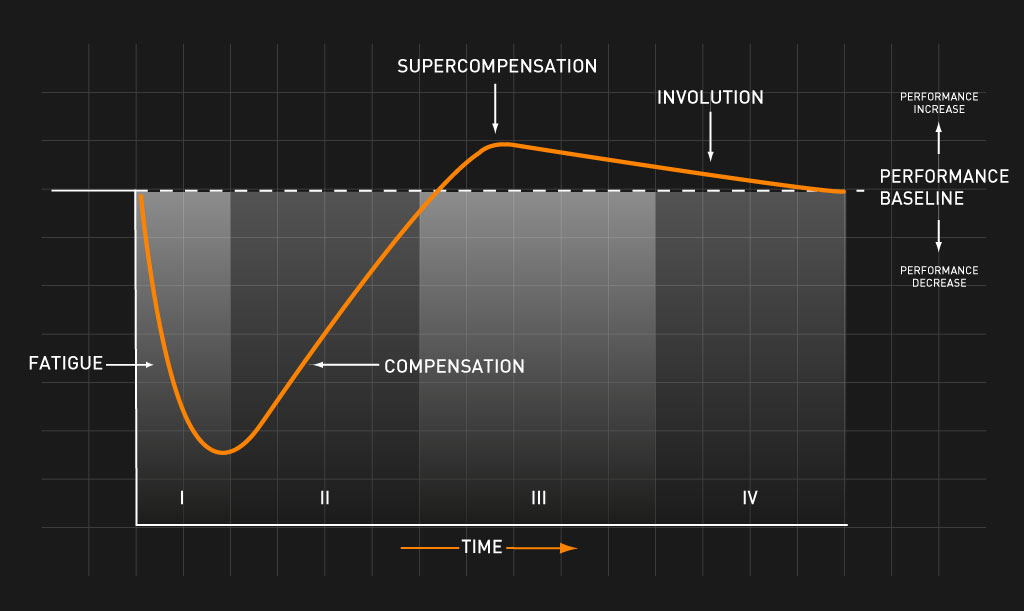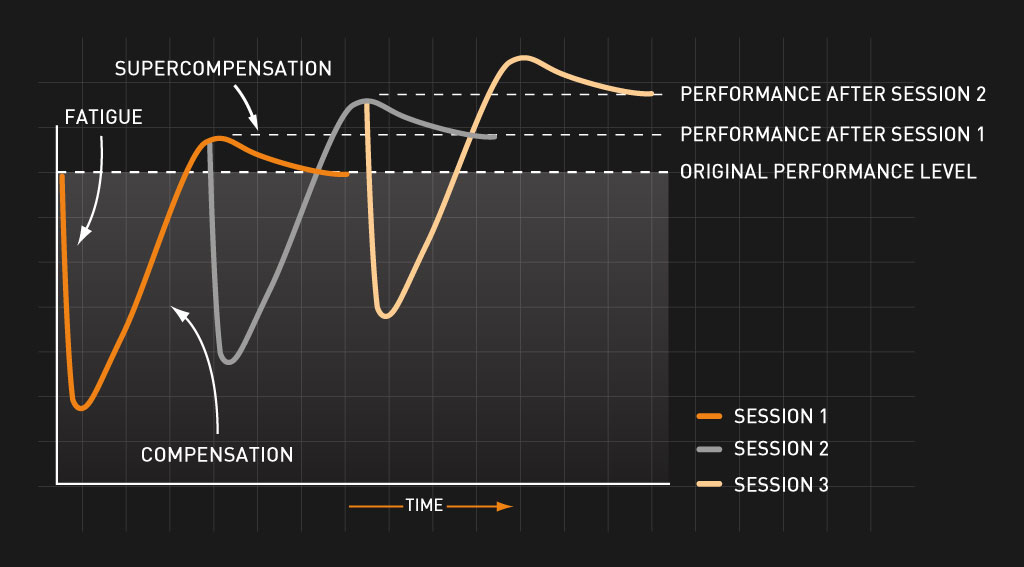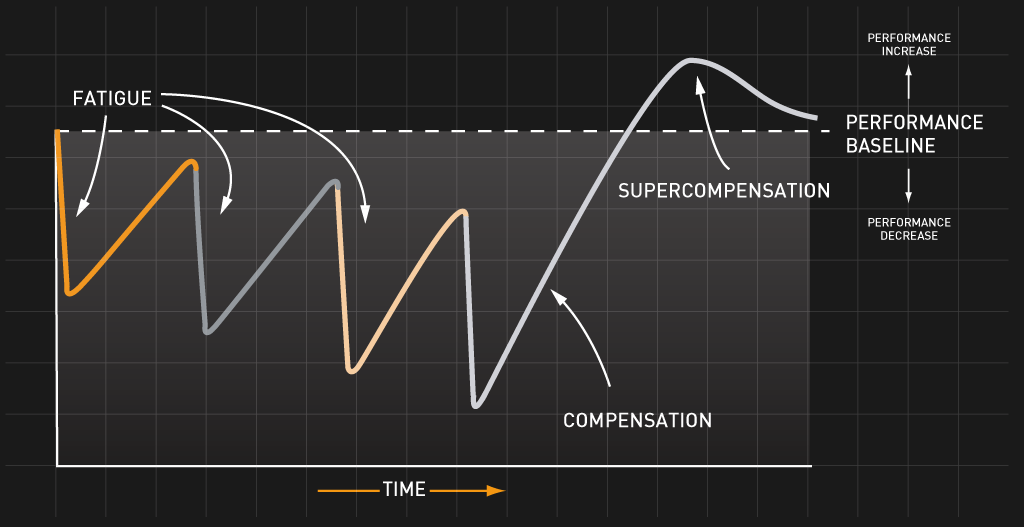It may seem odd to harp back to theory originating from 1967 by a scientist called Yakovlev, but the basic principles surrounding ‘getting fit’ are still as true today as they were back then. Of course there’s a lot more science around nowadays to help guide and record your efforts, but understanding how to build fitness is fundamental to making your training effective and that’s what we’re going to cover here.

The diagram above is adapted from Yakovlev’s original training theory and it communicates a few very important points. If you consider the vertical axis to be your ‘energy level’ and the horizontal axis to be ‘time’, Phase I illustrates the fatigue induced by a training session. Phase II demonstrates the body recovering and Phase III indicates an over-energised state, where the body has actually over-recovered (stronger than it was before the training session). Phase IV shows a regression of form as the over-energising wears off.
Each phase is of importance, but it’s Phase III that we’re obviously interested in – the getting stronger part. How does this happen? Clearly and simply, this is how all biological systems respond to a stimulus. We are not machines, so we don’t perform the same amount of consistent work, day in day out and get parts changed when they wear out or break. We are adaptive organisms, which means that when we’re put through hardship, we become weaker for a short time (Phase I). The shock of the stimulus causes our body to throw every resource it has at the situation (including important components of our diet) to facilitate repair and re-energising (Phase II). It’s little wonder then that we get Supercompensation (Phase III) when you consider how over-resourced we become.

The diagram above shows what happens when you throw a few well-timed training sessions together. Taking advantage of the ‘Supercompensation’ bulge means that you will have more energy to complete your next session and will therefore be able to create an even larger training stimulus. This of course leads to greater adaptation and you can begin to see how the training process starts to take shape.

Alternatively you could string a number of training sessions together, deliberately forcing inadequate recovery, thus producing a deep trough of fatigue and a subsequent peak in form, perhaps for a big event? This training practice is based on exactly the same principles illustrated in the preceding diagram – they are simply two different ways to achieve a similar outcome. One allows consistent well-timed recovery periods and the other deliberately applies cumulative fatigue and then provides a longer recovery period at the end to get a large supercompensation bubble. The beauty of stringing multiple training sessions together to create a trough of fatigue is that given sufficient recovery time, you can really benefit from a big rise in form for a special occasion, like an event you’ve been aiming for. This in essence is called ‘Peaking’ and is commonplace in professional sporting scenarios.
The key messages Yakovlev was wanting to communicate all those years ago was:
No pain, no gain: If you don’t put the effort into a session, you’re not going to create a stimulus for adaptation.
Never ignore the importance of recovery: It’s all well and good pushing yourself through the pain barrier, but too much of a good thing isn’t going to help you. You must leave room for the adaptation (compensation) to occur.
Does this all sound a bit theoretical? Of course it does and we will of course provide you with some practical training scenarios over this series of articles. First of all, please take the time to read the Performance Nutrition article we’ve prepared where we talk about the importance of your nutritional intake and the impact this has on the fatigue stimulus and consequently compensation and supercompensation. Once you’ve got the full picture, we can start to String it Together and make some clear recommendations.
We have produced a number of articles in this series, so click on one of the links below to learn more:
If you have any further questions, why not consider booking into our Fitness Consultancy, or give us a call on 0344 332 0852 // email: enquiries@torqfitness.co.uk





